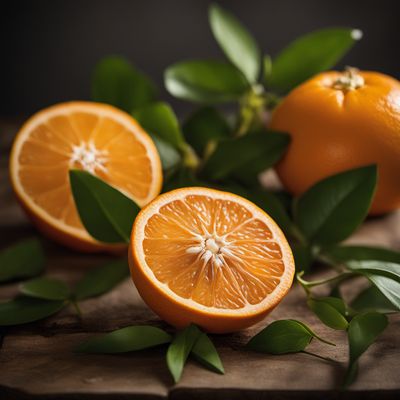
Ingredient
Mandarins
The Citrus Jewel
Mandarins are small, round citrus fruits with a bright orange or reddish-orange peel. They have a sweet and tangy flavor, with a refreshing burst of juice when bitten into. The segments are easy to separate, making them a convenient and enjoyable snack. Mandarins are also used in salads, desserts, juices, and as a flavoring in sauces and marinades.
Origins and history
Mandarins are believed to have originated in Southeast Asia, specifically in China and Vietnam. They were introduced to Europe and other parts of the world through trade routes, and their popularity spread rapidly. Mandarins are associated with good luck and prosperity in Chinese culture, often given as gifts during the Lunar New Year. Today, they are cultivated in many countries with suitable climates, including Spain, Italy, the United States, and Morocco.
Nutritional information
Mandarins are low in calories and high in vitamin C, providing a boost to the immune system. They also contain dietary fiber, potassium, and antioxidants that contribute to overall health and well-being.
How to select
When selecting mandarins, look for fruits that are firm, heavy for their size, and free from blemishes or soft spots. The peel should be smooth and vibrant in color, indicating ripeness. Avoid any that have a dull appearance or feel lightweight, as they may be dry or past their prime. Mandarins with a strong, sweet aroma are likely to be flavorful and juicy.
Storage recommendations
To maintain the freshness of mandarins, store them in a cool, dry place or in the refrigerator. They can be kept at room temperature for a few days, but refrigeration helps prolong their shelf life. Keep them in a perforated bag or in the crisper drawer to prevent moisture loss. Mandarins can be stored for up to two weeks, but it is best to consume them as soon as possible for optimal flavor and juiciness.
How to produce
Mandarins can be grown in home gardens or purchased from local farmers. They thrive in warm climates and require well-drained soil and plenty of sunlight. With proper care and maintenance, mandarin trees can produce an abundant harvest of fresh fruits.
Preparation tips
To enjoy mandarins, simply peel off the skin and separate the segments. They can be eaten as a refreshing snack on their own or added to salads for a burst of citrus flavor. Mandarins can also be juiced or used as a garnish for desserts and cocktails. The zest of mandarins adds a fragrant and tangy note to baked goods, sauces, and marinades. Use a microplane or fine grater to remove the zest, being careful not to include the bitter white pith.
Culinary uses
Mandarins are commonly used in salads, desserts, juices, and as a flavoring in sauces and marinades. They are a popular ingredient in Asian, Mediterranean, and international cuisines, adding a bright and citrusy element to dishes.
Availability
Mandarins are widely available in countries with suitable climates for citrus cultivation, such as China, Spain, Italy, the United States, and Morocco.
